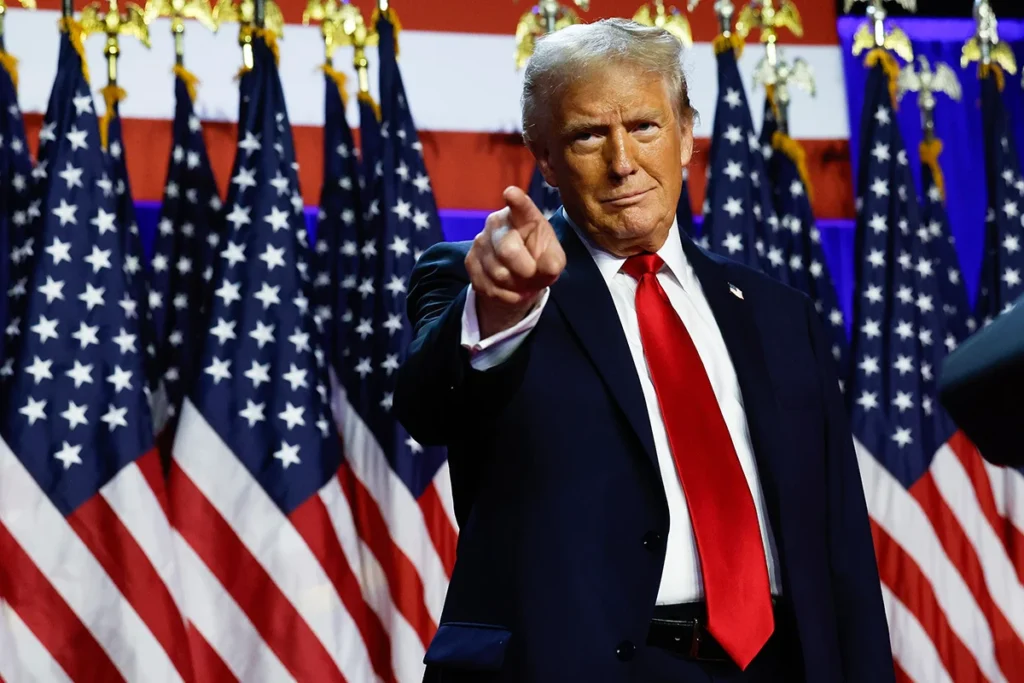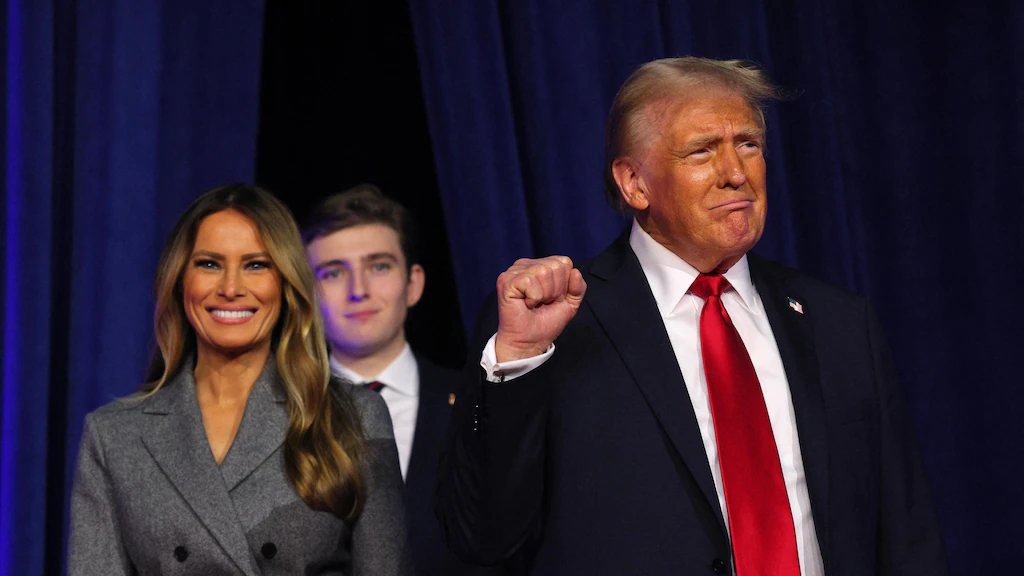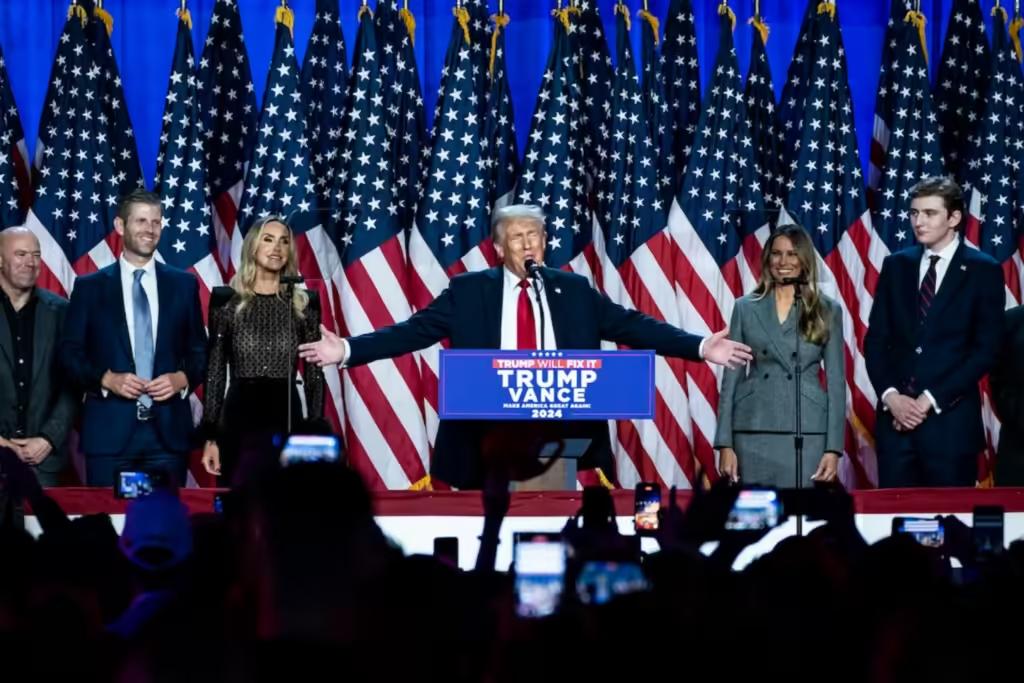January 20, 2025
Donald Trump was officially sworn in as the 47th President of the United States on January 20, 2025, in a highly anticipated inauguration ceremony in Washington, D.C. This historic event marked his return to the White House after previously serving as the 45th President from 2017 to 2021, making him the second U.S. president in history, after Grover Cleveland, to serve non-consecutive terms.

A Historic Election Victory of Donald Trump
The 2024 presidential election, held on November 5, 2024, was one of the most closely watched in U.S. history. Trump ran as the Republican nominee, facing off against Democratic candidate Vice President Kamala Harris. With a campaign focused on themes of “America First,” economic revival, border security, and “restoring law and order,” Trump won 312 Electoral College votes, decisively surpassing the 270 votes needed to secure the presidency.
Notably, Trump also won the popular vote, with 49.8% of the vote compared to Harris’s 48.3%. Key battleground states like Pennsylvania, Wisconsin, and Arizona played a pivotal role in his victory. His ability to win back suburban voters and maintain his grip on rural America helped him clinch the presidency. The Republican Party also made significant gains in Congress, securing a majority in the House of Representatives and narrowing the Democratic majority in the Senate.

Inaugural Address: A Vision for the Future
In his inaugural address, Trump outlined his vision for his second term, emphasizing national security, economic growth, and a commitment to putting “America First.” He promised sweeping reforms to immigration policies, including the resumption of border wall construction and stricter deportation measures. Trump also vowed to rebuild America’s manufacturing sector, reduce reliance on foreign energy, and implement tax reforms to benefit working-class families.
“Our goal is simple: to restore the greatness of America, protect our citizens, and ensure that every American has a chance to thrive,” Trump declared during his speech.
Key Cabinet Appointments and Policy Directions of Donald Trump
Shortly after his inauguration, Trump announced several high-profile cabinet appointments. Notable among them are:
- Marco Rubio as Secretary of State, bringing his foreign policy experience to the administration.
- Rand Paul as Secretary of Health and Human Services, tasked with revamping healthcare policies.
- Sarah Huckabee Sanders, former White House press secretary, as Secretary of Education.
These appointments signal Trump’s intent to prioritize strong leadership and conservative values in his administration.
Trump has also signed several executive orders within days of taking office, including:
- Resuming construction of the U.S.-Mexico border wall.
- Revoking green energy subsidies to focus on domestic oil and gas production.
- Imposing stricter sanctions on China for intellectual property theft.
Democratic Party Response for Donald Trump
Trump’s return to the presidency has posed new challenges for the Democratic Party. While some Democratic leaders have indicated a willingness to work with the administration on bipartisan issues like infrastructure and economic recovery, others have vowed to resist what they describe as “dangerous authoritarian policies.”

House Minority Leader Hakeem Jeffries stated, “We will hold this administration accountable and ensure that the rights and freedoms of all Americans are protected.” However, Trump’s policy proposals, such as enhanced border enforcement and trade renegotiations, have already sparked heated debates on Capitol Hill.
Public Reaction: A Nation Divided
Trump’s return to the White House has polarized the nation, with his supporters celebrating a “return to greatness” while critics express concerns about potential authoritarian tendencies and the spread of misinformation.
Mass rallies have been held in support of Trump’s presidency, with his loyal base hailing his commitment to addressing issues like illegal immigration, crime, and economic stagnation. On the other hand, protests have erupted in cities across the country, with demonstrators criticizing Trump’s policies on immigration, climate change, and LGBTQ+ rights.
According to recent polls, the country remains deeply divided, with Trump’s approval rating hovering at 52%—a stark contrast to his historically low ratings at the end of his first term.
Foreign Relations and Global Impact of Donald Trump
The international community is closely monitoring Trump’s presidency, particularly his approach to foreign policy. His administration has already signaled a tougher stance on China, Russia, and Iran. Trump has also called for renegotiating trade deals with Mexico and Canada and hinted at withdrawing from certain climate agreements, sparking concerns among U.S. allies in Europe and Asia.
However, some world leaders, including Brazilian President Jair Bolsonaro and Hungarian Prime Minister Viktor Orbán, have welcomed Trump’s return, expressing hope for stronger bilateral relations.
Looking Ahead: Challenges and Opportunities
As Donald Trump begins his second term, the nation faces significant challenges, including economic recovery, healthcare reform, and addressing climate change. The administration’s success will largely depend on its ability to unite a deeply divided nation and navigate complex global dynamics.
While Trump’s presidency promises sweeping changes, its long-term impact remains uncertain. Supporters remain optimistic about his ability to deliver on his promises, while critics remain wary of potential overreach.
One thing is certain: the next four years under Donald Trump will be pivotal for the United States and its role on the global stage.


